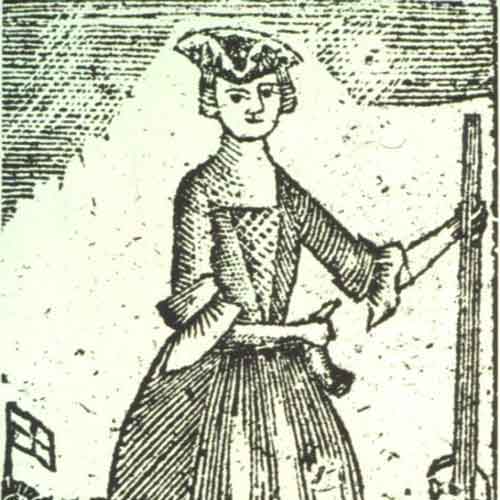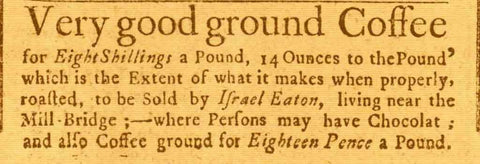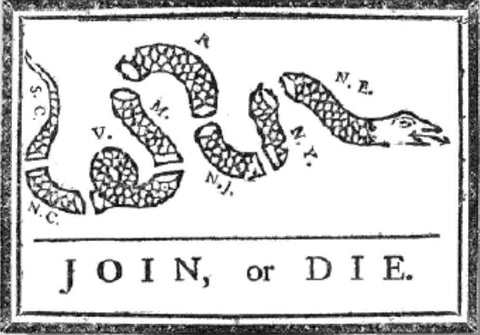
Strong Women Strong Coffee
Share
Dorothy Jones / Jane Barnard / Mary Gutteridge

Back in 1640, when New York was New Amsterdam, Dutch merchants brought Ethiopian coffee into the US from the Yemeni port of Mocha via Holland. Coffee was not that popular in North America though. And, it didn’t taste that great due to the extended travels in the hold of a ship. It was kind of a novelty, mostly considered to be a form of medicine by Americans. While coffee was well known by rock stars of the day like Captain John Smith from his travels in Turkey, it just wasn’t that big a deal in the US yet. So, coffee was known, it just didn’t really begin to catch on until about 1670 when English merchants brought it into what became New York, and also coffee from the East Indies began to come into North America from Sri Lanka and Java.
In 1670 Dorothy Jones of Boston becomes the first licensed coffee trader in America!
Consider this: While Dorothy Jones' husband Morgan Jones was traveling as a minister and schoolmaster leaving her financially responsible for her family, she acted boldly. At a time when women business owners were relegated to selling outside and men controlled most all property, Dorothy Jones not only petitioned for a merchant license and got it, she dealt in long-distance, international trade. No cell phones back then! At a time when women were a hair’s breadth above property themselves, Dorothy Jones became the very first documented coffee trader in America, before any man. One of the first coffee achievers in the US.
She teamed up with Jane Barnard:

Approved by Boston, “to keepe a house of publique Entertainment for the sellinge of Coffee and Chucalettoe” …
Yeah, Chocolate! While Jane Barnard did have a tavern license already, she was only allowed to sell coffee and cider. She saw a future in chocolate in North America just like Dorothy Jones saw a future in coffee. It was a leap, but they were both right.
Chocolate and coffee were both introduced to North America (not yet the United States of America) at just about the same time. There was a goldsmith, John Hull who was selling chocolate in 1667, but it hadn’t really caught on in a big way, so both women were trendsetters in their respective passion and vision. Just imagine a product that exists today with limited broad awareness, and jumping in with passion because you see a future there. ...Kind of like The Coffee Project did in 1997, aye?
While coffee was relatively novel and unknown in 1670’s Colonial America, some Americans did know its popularity elsewhere. England had taken to coffee almost twenty years prior. As coffee became popular in Europe, Americans wanted to be part of the scene. These women saw potential and helped to make something great happen. They were right there to make sure taverns and inns had it on their menu too*.

In 1718 Mary Gutteridge became full owner of the second Coffee House in America...
In 1718 Mary Gutteridge became full owner of the Gutteridge Coffee House first established in 1691 as an inn. It became the second established coffee house in Boston. As a widow, she petitioned the town of Boston to keep the business license and it was granted.
This was at a time when in London women were not even allowed in coffeehouses let alone own one. So, as progressive thinkers, Bostonians get pretty high marks.
Although they missed the Boston Tea Party of 1773 and the liberation of Boston in 1776** these three strong women helped set the stage for coffee becoming the hot beverage of Americans.

[ ** Fun Fact: As George Washington’s canons were pointed from Dorchester Heights into Boston, the long-established “London Coffee House” founded in 1689 was renamed “The American Coffee House.” in March 1776, as 11,000 British troops and 1,000 loyalists evacuated Boston’s eight-year occupation to Nova Scotia. ]
———
If you’d like to try coffee of the day...
...use equal parts North African (Ethiopian or Yemen) and Java coffees for a Colonial American era Mocha Java.
Roast them separately and blend. Adjust degree of roast and proportion to taste. You get a beautiful, fruity sparkle and sharpness of North Africa with the round mellow balance of East Indies coffee: An over 300-year-old recipe with a great history.
